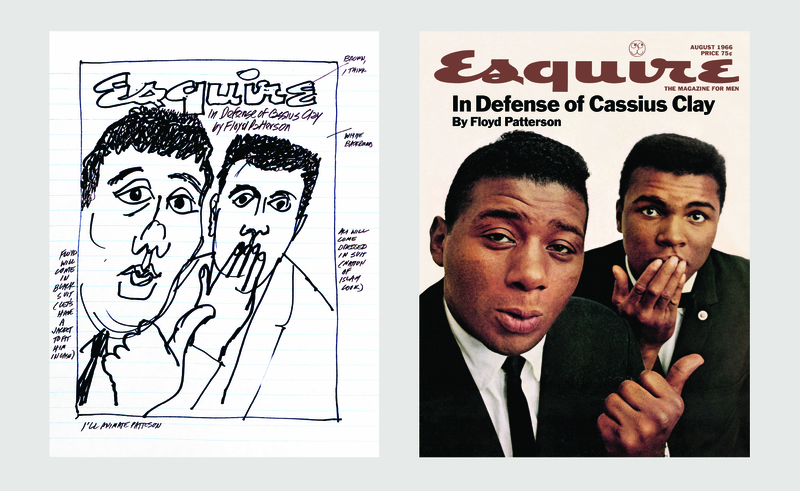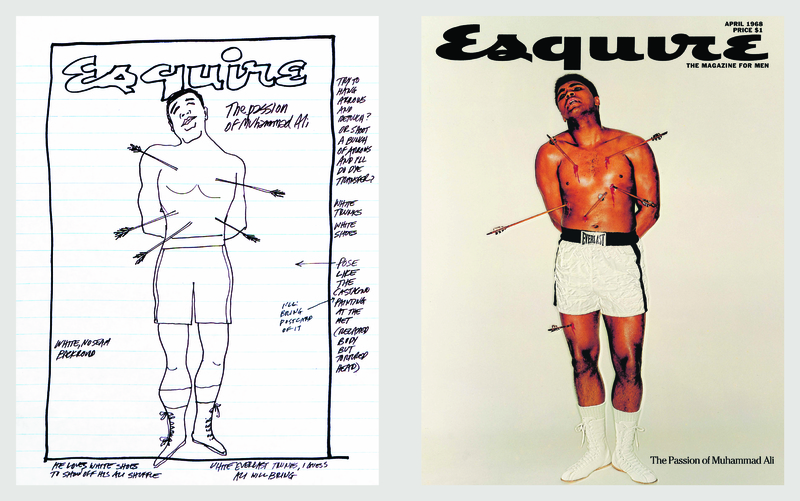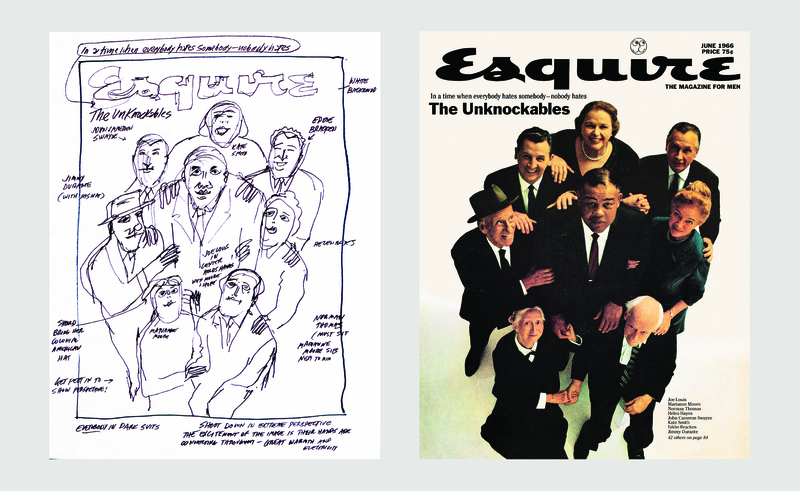RACE
One year after their Esquire partnership began, editor Harold Hayes tasked Lois with a conventional challenge: deliver a Christmas cover. Aiming to turn the trope of the benevolent, ruddy-faced Kris Kringle on its head, Lois staged boxer Sonny Liston as America’s first black Santa. The resulting close up of the pugilist’s aggressively impassive expression, surrounded by no explanatory text, mocked the commercial aspirations of the holiday issue while offering biting commentary on increasing racial tensions across the nation. Lois proffered Liston—a maligned anti-hero and convicted felon—to test the public’s adherence to the season’s “goodwill towards men.” Unsurprisingly, controversy ensued and the magazine lost $750,000 in canceled advertising. Time magazine, however, later called the cover “one of the greatest social statements of the plastic arts since Picasso’s Guernica.”
Just months after posing for his Christmas Esquire cover, Sonny Liston, widely considered unbeatable in the ring, lost his heavyweight title to upstart Cassius Marcellus Clay. Later that year Clay, a devout Muslim, disavowed his slave name and adopted the Islamic name Muhammad Ali. Yet Ali’s religious beliefs continued to be disrespected both in and out of the ring, most notably by opponents like Floyd Patterson, who taunted Ali with his birth name in the months leading up to their November 1965 bout (and received an epic twelve round beating for it). By 1966 Ali made national news when he declared that his Muslim faith prevented him from fighting in the Vietnam War. This conscientious objection got him barred from boxing. As its appeal made its way to the Supreme Court, Lois organized a reconciliation between Patterson and Ali to demonstrate the latter’s widespread support amongst even his staunchest detractors in the past.
Perhaps one of Lois’s most iconic Esquire covers, if not one of the most iconic magazine covers of all time, Lois returned to the controversy surrounding Muhammad Ali and freedom of religion in the spring of 1968. In 1966 Ali was charged with draft evasion, imprisoned and stripped of his titles. Lois deemed Ali a martyr for his cause, posing him as Saint Sebastian—a Roman soldier persecuted for converting to Christianity—in the manner of Franco Botticini’s fifteenth century painting. Though Ali was uncomfortable with the image’s Christian overtones, he likened each arrow to the political blows dealt by adversaries like President Lyndon Johnson and Secretary of Defense Robert McNamara. Furthermore, Ali’s white Everlast shorts, recalling the suppleness of drapery in Renaissance paintings, emphasize the purity and tenacity of his devotion to his cause.
Lois’s third and final take on Muhammad Ali for Esquire, this cover expands upon the August 1966 issue by banding together a dozen cultural icons—including writers, actors, sportscasters, artists and more—to show their support for the villainized boxer. Banned from boxing in the prime of his career, Ali’s Supreme Court reprieve would not come until 1971. Lois staged this shoot a full two years earlier, posing luminaries such as James Earl Jones and Howard Cosell in the ring, fingers pointing accusatorily at the viewer who dares look down on them (or, by association, Ali). Lois’s reputation as a savvy firebrand was cemented in covers like these, redirecting the positive public image associated with celebrities towards a worthy social or political cause.



